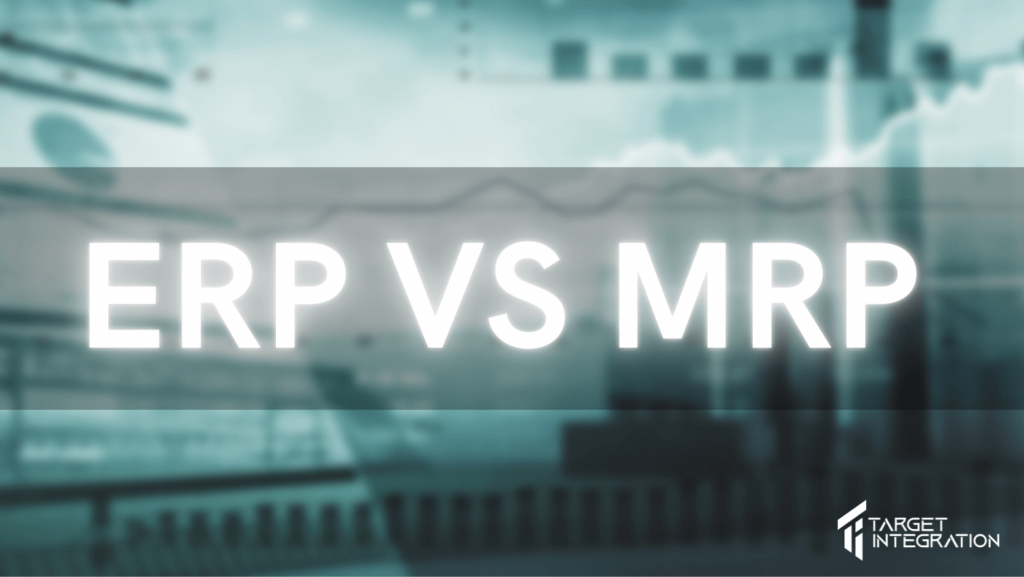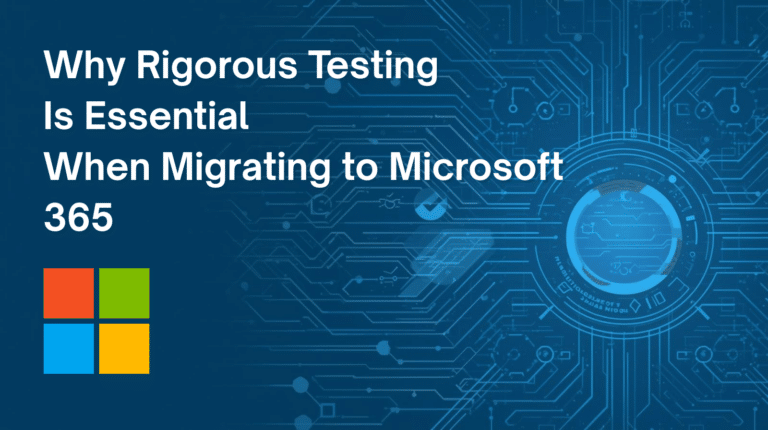Managing the shop floor, inventories, operations, and scheduling are all important aspects of running a manufacturing firm successfully. Real-time data and software technologies enable firms to automate operations and make smart data-driven choices as production and supply chains increase to meet bigger global requirements. ERP (enterprise resource planning) and MRP are two extensively used software solutions (material requirements planning). Learn the distinctions and benefits of each software system, when your company might require an ERP or MRP system, and how they can operate together to help simplify your operations.

What is an MRP System?
To begin, what does MRP stand for? The term refers to Material Requirements Planning software solutions in the manufacturing industry. These solutions are extremely useful in the manufacturing business since they detect and monitor what production supplies are required and when. This allows producers to prevent productivity loss due to downtime. Even organizations whose core operations are not manufacturing find MRP systems useful for production planning. This programme assists production planners in forecasting, ordering, and maintaining optimal amounts of inventory.
The basic objective of an MRP system is:
- Ensuring that the necessary supplies are accessible for manufacturing
- Ensuring that items are ready for distribution to customers
- Maintaining material and final product inventories
- Manufacturing activity, sales orders, and purchases are all planned.
MRP has developed in response to market and customer dynamics. Previously, manufacturers either bought their parts locally or manufactured them in-house. Mass manufacturing was the norm, and customization was not a concern. However, as worldwide rivalry between firms increased, manufacturers realized that they needed to produce more tailored products to gain customers rather than rely on price wars. These new items had more features and necessitated additional services, necessitating a new method of production management to match rising product complexity and the desire for a quicker time to market. As a result, MRP II was adopted, which included functionality that MRP I lacked, such as finances and general accounting, machine and labour capacity planning, and quality assurance. This technology enables goods to be better managed throughout their lifespan, rather than simply from month to month, which helps businesses reach production objectives and remain competitive.
With so many additional moving components introduced by customization, keeping production processes operating smoothly became vital. From planning to forecasting to expenditure, every part of production must work together to get the intended results with little waste. ERP (Enterprise Resource Planning) solutions were created to meet this demand.
MRP Key Features
An MRP system’s primary operations generally include:
- Stock Control
- Production Planning
- Inventory Control
- Management of the Supply Chain
These MRP system characteristics, when used correctly, may lead to cost savings and better productivity. However, for an MRP system to properly improve manufacturing operations, data must be entered accurately. Incorrectly entered numbers will distort planning and ordering.
What is an ERP System?
ERP is an abbreviation for Enterprise Resource Planning. These systems, which are based on the current functionality of MRP II software, are used to help plan, manage, and automate activities such as supply chain management, finances, project management, personnel, and manufacturing in order to better serve a complete business. ERP systems are comprised of a suite of ERP apps that connect with one another to assist organizations in more successfully managing both the parts and the whole of their organization.
Individual ERP SaaS (Software as a Service) applications can be used by businesses to solve specific processes. Businesses can also choose between Big-Business ERP and Small-Business ERP, each of which is geared to the demands of enterprises of varying sizes.
An ERP system typically addresses all operational requirements, typically providing:
- A system that is integrated
- A shared database
- Operation in real-time
- Application and component support
- A unified user interface for all apps
- Deployment options include on-premise, cloud-hosted, and SaaS.
Businesses should choose an ERP system that eliminates the need for costly adaptations, adapts to the quick speed of company change, addresses future technologies, and meets other needs.
ERP Key feature
A manufacturing ERP software system improves performance and project management by assisting in the planning, budgeting, forecasting, and accurate reporting of an organization’s financial health and procedures. ERP systems give firms a complete picture of all of their operations’ moving elements.
A SaaS ERP solution enables important cross-application connectivity for enterprises. Data may be transferred because apps can link and interact via shared on-premise databases or the cloud, giving organizations a more complete picture of how their operations are working. ERP software then generates thorough performance data on how resources are spent, allowing for more informed decision-making.
ERP systems also provide the following business benefits:
- Automation and integration save costs while increasing efficiency and production.
- Improved administration and monitoring of regulatory compliance
- A decrease in human mistakes and wasted time and resources
- Improved communication and collaboration across roles and departments
- Scalable company expansion
- Partner and supplier management has been improved.
Relationship between ERP and MRP
ERP and MRP work together to optimize business processes. MRP software functions as a subsystem of an ERP solution, delivering material and resource information to the ERP solution, which combines and uses that data to advise other business departments. For example, the finance department will apply the information provided by the MRP solution to the ERP to compute accounts receivable and manufacturing costs in order to establish product prices.
Both technologies have had a significant impact on the manufacturing industry, assisting in increasing efficiency and output while decreasing production time.
Difference between ERP and MRP
The major distinction between ERP and MRP is that ERP systems aid in the planning and automation of a wide range of back-office business tasks, whereas MRP systems focus on materials management. ERP has a direct impact on accounting, production, supply chain, customer management, quality, operations, and planning. MRP, on the other hand, has a more limited scope of purchasing and planning for manufacturing supplies. As a result, each system’s users will be unique. ERP software is used by people from a range of departments, whereas MRP tools are used by individuals with a connection to manufacturing processes.
Another distinction between ERP and MRP is that MRP is a stand-alone solution. Some systems can be merged with others, although doing so can be difficult. ERP systems, on the other hand, are reasonably simple to combine with other solutions.
What does my company need?
A few variables must be considered while deciding between an ERP and an MRP system. An MRP system may be sufficient if your organization merely needs support with production processes and stock control. If your company wants greater integration to manage more operations, an ERP application may be necessary. Your company procedures, budget, and other factors will decide which technology is best for your operations, but there are a few things to keep in mind.
Which business operation do you want to optimize?
If you merely need to optimize production processes, an MRP system is perfect for you. ERP software is required if you wish to optimize, automate, and integrate activities that extend beyond manufacturing to accounting, human resources, and other areas.
What is your software budget?
MRP systems are less expensive since they are a simpler solution. To justify devoting funding toward an ERP system, examine what such a system can achieve for your company and how it will affect your bottom line and growth. Many businesses that invest in an ERP system discover that the system’s optimization of company processes results in such high efficiency and productivity rates that it eventually pays for itself.
Is your company growing rapidly?
To be successful and keep up with expansion, a firm on the verge of significant corporate development will need to depend increasingly on automation and standardized, simplified operations. This necessitates the implementation of an ERP system. If your organization is expected to remain stable, you may simply require an MRP tool.
How can Target Integration help you?
For many years, Target Integration has been at the heart of evolving business technology trends. We work with the most efficient and cutting-edge technologies, such as cloud, digital migration, and SaaS, to ensure the most successful digital transformation of SMEs (Small and Medium-Sized Enterprises). Target Integration offers extensive hands-on expertise with firms in a variety of industries, including manufacturing and supply chain. For a free consultation, please call us or leave a note.



